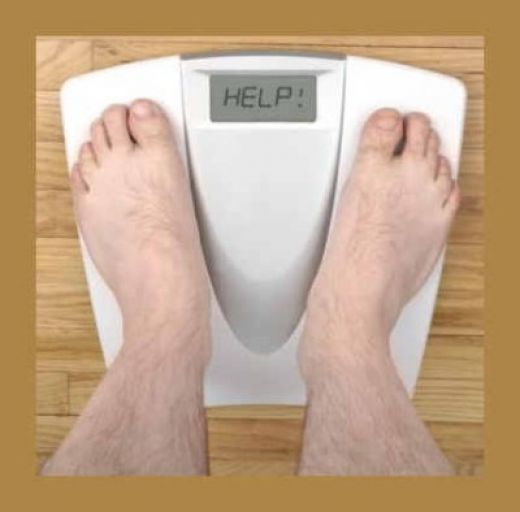Eating small meals throughout the day sounds difficult- but with a little simple planning, and the right advice, the rewards can be quite amazing.
Eating 5 or 6 meals a day on a weight reduction plan
You might have heard this before….
That you should eat 5 or 6 smaller meals throughout the day,
instead of maybe skippin breakfast,
throwing together a junk food lunch,
and having a big dinner.
I know there’s a lot of misinformation and misunderstanding out there…
So maybe you didnt figure the concept had any real science behind it.
And I feel ya… the first time I heard it, I rolled my eyes, and scoffed.
But that was several years ago, and after many studies, and much personal experience,
…… I can tell you that it is the real deal.
This is a key concept to not only losing weight, but keeping it off..
… and although it might sound difficult–
with a little advance planning, it is quite simple.
If you work, carry a small cooler bag, or keep some backup supplies in a fridge.
Stash some fruit or trail mix in your desk, in case you’re pressed for time.
It is essential that the meals you consume are appropriate for the time of day-
— in order to ramp up your metabolism, and enhance optimum hormonal production, including those responsible for fat-burning, and muscle building.
It is especially important that NO meals are comsumed within 3 hours of bedtime–
—- that the heavier meals are consumed early in the day,
and any evening meals are light and low in calories and fats.
Timing is critical, here.. so plan your day accordingly.
> Workout no closer than 3 1/2 hours of bedtime.
> Do not consume any food 45 minutes or less before your workout,
and be sure you eat a meal containing protein immediately,
or within 1 hour of finishing workout.
When choosing your meals, stick with the 40/30/30 index as much as possible.
— 40% protein, 30% carbs, 30% fats – with no more than 1800 calories per day.
Remember – fats contain 9 calories per gram, carbs and proteins only 4 calories,
so you can have only half as much fat as protein or carbs.
Use only healthy fats like Olive Oil (preferred) or Canola Oil.
NO MARGARINE, Lard or “BUTTERY SPREADS” — only unsaturated fats will do.
Avoid fried foods (foods absorb extra fat),
alcohol (empty calories),
high sodium or salty (water retentive) foods,
soy based (hormonally unsound) foods.
DAILY MEAL PLAN
Breakfast: 1 fruit (usually a banana, apple, plum or orange)
1/2 C. V8 juice, or orange juice, plus coffee or tea ( <1 tsp sugar ok )
3 oz. protein (hard boiled egg and palm sized portion off protein list)
Meal #2: 1 fruit (usually a fruit I did not already eat today)
3 oz. protein (see protein list – baked chicken, turkey, lean beef or pork, or fish)
A small piece bread/half baked potato or 1/2 C. rice/pasta ( TSP tomato sauce/oil OK.)
1 vegetable or dip (guacamole, salsa, salad, steamed asparagus or broccoli, etc)
Meals #3 and #4: Same choices as Meal # 2 with an extra vegetable but NO starches.
Meal #5: 3 oz. protein (see protein list) plus 1 fruit, 1 veggie
Meal #6: 1 portion fruit
Caloric intake should be carefully monitored-
— there are many books and online resources to help you keep track of what foods have the most nutrition with the lowest amount of calories.
As previously mentioned, you’re shooting for a plan that will give you about 1800 calories.
If you were to have five 300 calorie meals, you would still have room for an extra snack, or a protein shake.
In practice, you should be eating a heavier meal in the early part of the day, going lighter as the day progresses.
Choosing your proteins will probably be the most complicated part of your meal planning.
The good news is that there are plenty of good, nutritious proteins to choose from.
Here’s a short list of some of my favorites, in 3 oz portions unless noted.
Protein List
Tuna (in water) 30 grams protein, 135 calories
Cod (smoked) 20 grams protein , 88 calories
Shrimp (boiled) 21 grams protein, 99 calories
Lobster (steamed) 16 grams protein, 81 calories
Cottage Cheese 14 grams protein, 84 calories
Turkey (white meat) 25 grams protein, 130 calories
Trout (smoked) 29 grams protein, 155 calories
Crab ( 2 – steamed) 20 grams protein, 100 calories
Chicken (roasted, white) 23 grams protein, 128 calories
Salmon (steamed) 21grams, 126 calories
Beef round (lean broiled) 24 grams protein, 163 calories
Incorporating fruits and vegetables that are low in calories is also very helpful in meal planning.
And, if you find yourself desiring a snack between meals, grab one of these!
They include:
Vegetables
Popcorn (unbuttered, very lightly salted)
Rice Cakes
Cucumber
Celery
Brussels Sprouts
Boiled Potatoes
Broccoli
Mushrooms
Tomatoes
Watercress
Pigeon Peas
Red Peppers
Fruit
Cherries
Apricots
Melon
Chayote
Currants
Grapefruit
A weight loss goal is helpful, as long as you don’t attach an unrealistic timetable to it.
Weigh yourself no more than once a week, and always at the same time of day.
Remember that body weight fluctuates up and down, even when you’re losing fat…
— you didnt put on the weight overnight – so don’t expect to lose it overnight, either.
The most effective weight management plan isn’t a temporary fix,
……… but a permanent change in how and what you eat.
Finally, be sure you are hydrating properly, at least 64 ounces of water a day.
This will actually help you to lose weight..
–once your body becomes acclamated to getting the proper amount of water, it will not ‘hold on’ to water as much or as long.
It will also help flush toxins out, and keep your hormonal system running properly.
Now, GO GET IT !!!
HOY!

